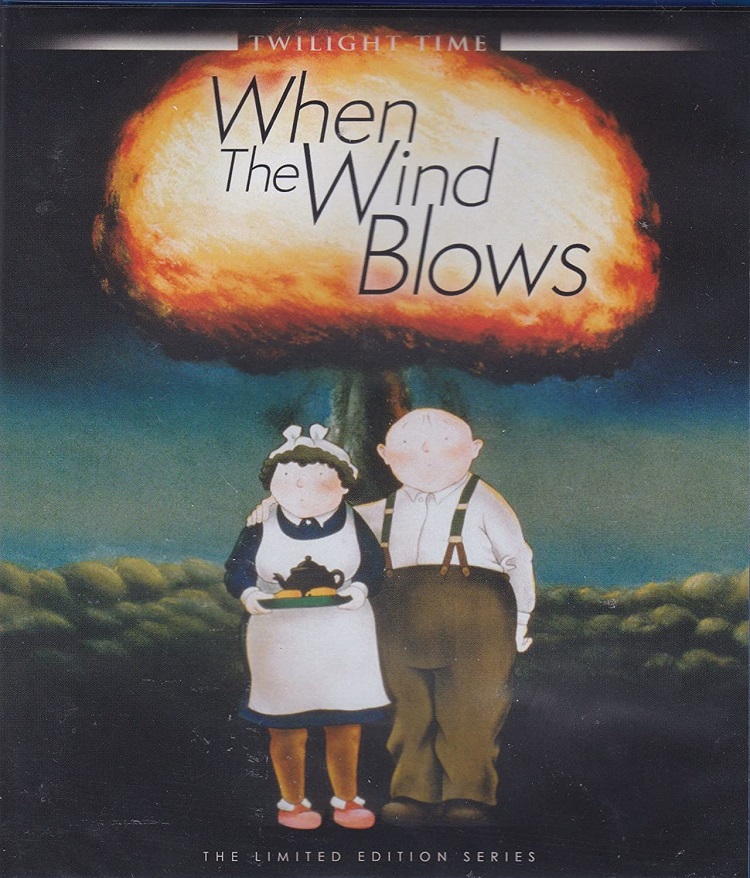
Not many people may remember this, but there was a lot of nuclear war going back in the ’80s. Big time. All over the place! Tensions between the various powers in the east and the west began to swelter, and James Bond and many other agents from the free(er) parts of the world were rushed into action. Sometimes they succeeded, making the way for artists like Rita Coolidge to gain a hit single out of the deal in the process. Other times, however, things failed with the utmost of (in)efficiency. The world was destroyed, time and time again, inevitably paving the way for a slew of (mostly Italian) folks with wild hairdos and outfits roaming the deserts spanning New Mexico and Rome in search of the last fertile woman, water, the current whereabouts of one Mark Gregory, or, at the very least, a little hope.
Alas, hope did not always spring eternal during the many nuclear winters filmmakers frequently summoned during this time. Though there were many (mostly silly) motion pictures to revisit humanity in the surprisingly retroactive radioactive worlds of the ’90s and 2000s, a few preferred to keep things more believable with likely “Well, just suppose…” scenarios – wherein we were brought to the brink of a holocaust. And then there even fewer titles that actually took utterly fathomable possibilities inspired by current tense political situations to the next level. In America, we were horrified by television dramas like Testament, The Day After. On the other side of The Pond, the British gave us the hard-hitting BBC epic Threads and the animated theatrical offering When the Wind Blows.
Based on the graphic novel by Raymond Briggs, Jimmy T. Murakami’s When the Wind Blows tells of an elderly English couple (as voiced by John Mills and Peggy Ashcroft) in rural Sussex. Jim Bloggs returns home from a visit to the city one afternoon and is aghast over the current crisis with the Soviet Union. With the assistance of several (contradicting) pamphlets the government has graciously printed out to prepare its citizens on how to survive a blast (you know, the paper bag over the head bit?), Jim attempts to turn their charming two-story cottage into, well, something else – including a weird lean-to in the living room. This is all much to the chagrin of his wife, Hilda, who is so set in her day-to-day routine as a tidy, rural English housewife from the Greatest Generation, it’ll take an atomic bomb to snap her out of it.
Sure enough, boom. Though they are plenty far away from ground zero itself, Jim and Hilda soon find themselves in the aftermath of a catastrophic, brief war between leaders they themselves no longer know the identities of. (They miss the likes of Churchill and Stalin, as they always knew where those two stood, what with their respective cigars and moustache.) But their ignorance of politics is seconded only by their own misunderstanding as to the severity of their current situation. These bombs aren’t the same as the ones from World War II. The two have nary an inkling as to what radiation sickness is, to wit Jim – in traditional “stiff upper lip” fashion – regards their unending headaches, fatigue, and red spots as the result of stress in light of having to adjust to their new situation. The newspapers will put all their fears to rest once they arrive. Some day.
The film also features an opening theme by David Bowie, a few selections from the likes of Squeeze and Genesis on the soundtrack (look, they were popular once, all right?), and a score by Roger Waters. Anyone has ever listened to a solo Roger Waters album should have a fairly good idea of what to expect here, as this tale could almost be mistaken as one of his own personal projects, what with all the happy stuff going on here (such as people too stupid to know they’re sick dying of radiation poisoning). Constructed via a blending of traditional hand-drawn animation, stop-motion, and even a bit of live-action footage here and there, When the Wind Blows occasionally gave me a some bad childhood flashbacks of catching the odd Paddington Bear rerun on television.
That said, however, When the Wind Blows is quite a unique blending of this and that, and shows the vastly underrated skills of late animator/director Jimmy T. Murakami (who, in addition to his work in animation, also stepped behind the camera for a few Roger Corman productions – something I’m sure will not impress most art movie lovers, but there it is, just the same). Murakami is also the subject of an accompanying feature-length documentary, Jimmy Murakami: Non-Alien (2010). While the Irish-made production from Sé Merry Doyle does dive into the late filmmaker’s work and life, it mostly focuses on his unfortunate incarceration at the Tule Lake Segregation Center during World War II, as well as his eventual return to same in 2009 when the site was added to the World War II Valor in the Pacific National Monument.
Both features are presented here in their original aspect ratios (When the Wind Blows is a full frame affair, while the newer documentary is widescreen), and the overall look between each title is understandably different, but nevertheless good. The main feature includes a 2.0 DTS-HD MA soundtrack, with an isolated score/effects track (also in DTS-HD MA 2.0) and an audio commentary by first assistant director Joe Fordham and Twilight Time’s Nick Redman. A retrospective making-of featurette, The Wind and the Bomb, is also included here, as is a slightly newer interview with Raymond Briggs. Twilight Time rounds up their release of this animated ’80s nuke ’em classic with liner notes by Julie Kirgo.